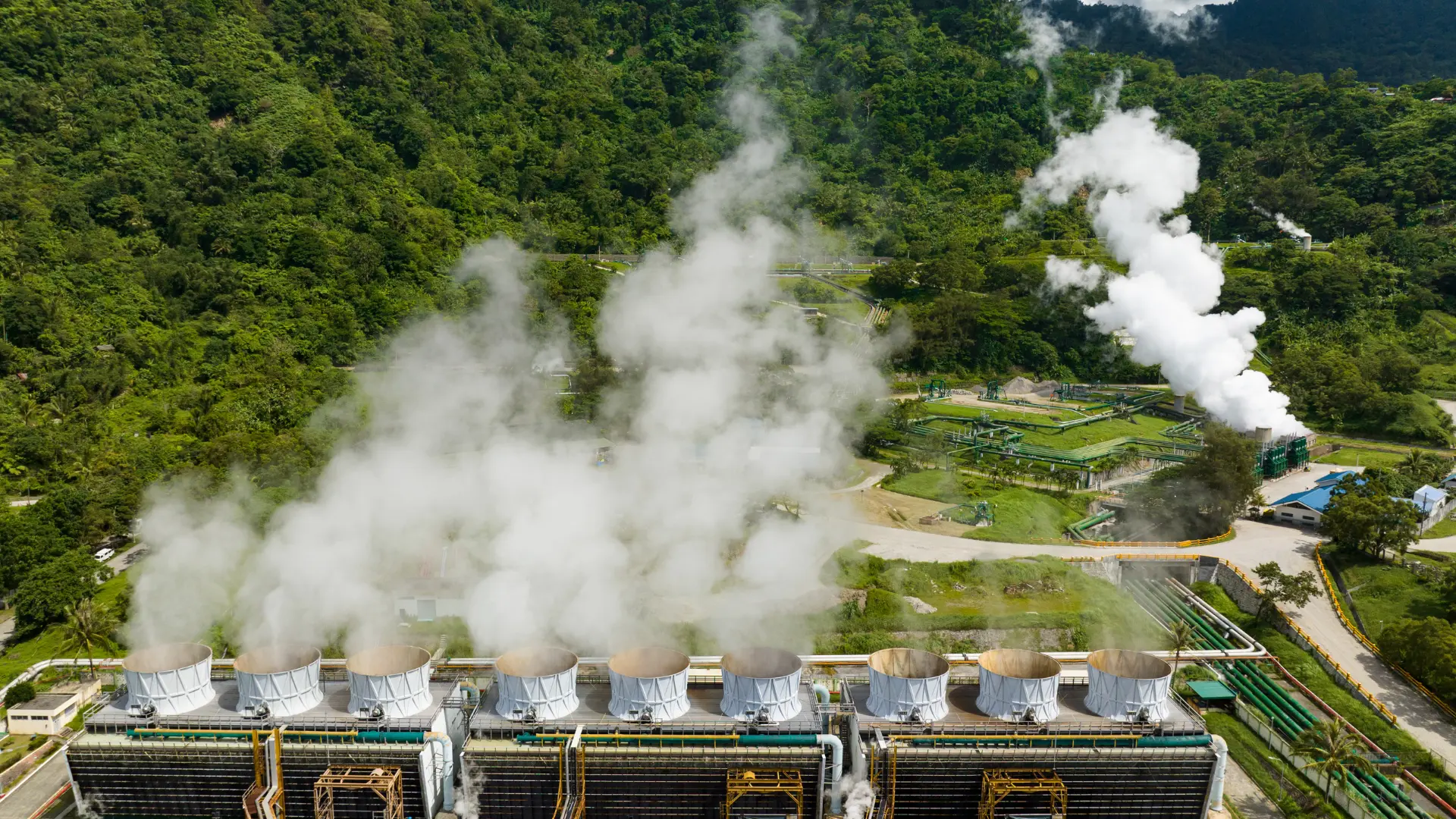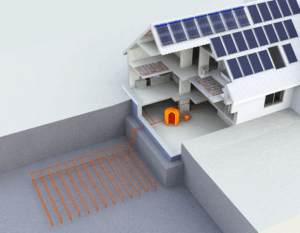Geothermal energy, derived from the Earth’s internal heat, is a sustainable and reliable source of power that has gained significant attention in the global energy landscape. With increasing concerns over climate change and the need for clean energy solutions, geothermal resources offer a promising alternative to fossil fuels. We aim to provide a comprehensive overview of geothermal resources, their types, distribution, advantages, and challenges, along with the potential for future development.
Understanding Geothermal Resources
What is Geothermal Energy?
Geothermal energy originates from the heat stored beneath the Earth’s crust. This heat is generated from the radioactive decay of minerals and the residual heat from the Earth’s formation. The temperature increases with depth, creating a geothermal gradient that can be harnessed for various applications.
Types of Geothermal Resources
Geothermal resources can be classified into three main types based on their temperature and potential uses:
- Low-Temperature Resources: These resources have temperatures below 150°C and are primarily used for direct applications such as space heating, greenhouse heating, and aquaculture.
- Medium-Temperature Resources: With temperatures ranging from 150°C to 200°C, these resources are suitable for electricity generation using binary cycle power plants, which are more efficient at moderate temperatures.
- High-Temperature Resources: These resources have temperatures above 200°C and are ideal for electricity generation using conventional steam turbines.
Geothermal Resource Distribution
Geothermal resources are not uniformly distributed around the world. They are typically found in regions with high volcanic activity, tectonic plate boundaries, and areas with significant geothermal gradients. Some of the most notable geothermal resource regions include:
- The Ring of Fire: An area, encircling the Pacific Ocean known for its high volcanic activity and geothermal potential. Countries like the United States, Indonesia, the Philippines, and Japan have substantial geothermal resources. Most of Earth’s volcanoes and earthquakes occur along the Ring of Fire.
- East African Rift Valley: This region in Africa has significant geothermal potential, with countries like Kenya and Ethiopia investing heavily in geothermal energy projects.
- Iceland: Known for its abundant geothermal resources, Iceland utilizes geothermal energy for both electricity generation and direct applications such as district heating. As of 2023, 90% of all its homes are heated by geothermal energy.
- Alberta, primarily known for its rich oil and gas reserves, is not traditionally recognized as a major player in geothermal energy. However, recent developments and interest in diversifying the province’s energy portfolio have brought geothermal power into the spotlight
Harnessing Geothermal Energy
Electricity Generation
Geothermal energy can be converted into electricity using various technologies, depending on the temperature of the resource:
- Dry Steam Power Plants: These plants use steam directly from geothermal reservoirs to drive turbines and generate electricity. They are suitable for high-temperature resources and are the oldest type of geothermal power plants.
- Flash Steam Power Plants: These plants are the most common type of geothermal power plants. They use high-pressure hot water from the reservoir, which is depressurized (or flashed) to produce steam that drives the turbines.
- Binary Cycle Power Plants: These plants are suitable for medium-temperature resources. They use a secondary fluid with a lower boiling point than water. The geothermal water heats the secondary fluid, which vaporizes and drives the turbines.
Direct Use Applications
Geothermal energy can also be used directly without converting it to electricity. Some common direct use applications include:
- District Heating: Geothermal heat is used to provide heating for residential and commercial buildings through a network of insulated pipes.
- Greenhouse Heating: Geothermal heat is used to maintain optimal temperatures for plant growth in greenhouses.
- Aquaculture: Geothermal heat is used to regulate water temperatures in fish farms, enhancing fish growth and productivity.
- Industrial Processes: Geothermal heat is used in various industrial applications, such as drying foods, pasteurizing milk, and washing wool.
Geothermal Heat Pumps
Geothermal heat pumps (GHPs) are a highly efficient technology for heating and cooling buildings. They utilize the stable temperature of the ground to transfer heat to or from a building. GHPs consist of a heat pump, a ground heat exchanger, and a distribution system. They can significantly reduce energy consumption and greenhouse gas emissions compared to conventional heating and cooling systems.
Advantages of Geothermal Energy
Environmental Benefits
Geothermal energy is a clean and sustainable source of power. It produces minimal greenhouse gas emissions compared to fossil fuels, helping to mitigate climate change. Additionally, geothermal power plants have a small land footprint and do not require fuel transportation, reducing their environmental impact.
Reliability and Stability
Geothermal energy is a reliable and stable source of power. Unlike solar and wind energy, which are intermittent and depend on weather conditions, geothermal energy provides a constant power output. This makes it an excellent base-load power source, ensuring a steady supply of electricity.
Economic Benefits
Investing in geothermal energy can provide significant economic benefits. It creates jobs in the construction, operation, and maintenance of geothermal plants. Moreover, geothermal energy projects can stimulate local economies, particularly in rural and remote areas.
Challenges and Limitations
High Initial Costs
One of the main challenges of geothermal energy is the high initial investment of exploration and drilling. Identifying suitable geothermal reservoirs requires extensive geological surveys and drilling deep wells, which can be expensive and time-consuming.
Resource Depletion and Management
Geothermal reservoirs can deplete over time if not managed properly. Sustainable management practices, such as reinjecting spent geothermal fluids back into the reservoir, are essential to maintain the resource’s longevity and productivity.
Location-Specific Nature
Geothermal resources are location-specific and not evenly distributed globally. This limits the widespread adoption of geothermal energy, as it is only viable in regions with significant geothermal potential.
Future Prospects and Innovations
Enhanced Geothermal Systems (EGS)
Enhanced Geothermal Systems (EGS) are an innovative technology that aims to expand the potential of geothermal energy. EGS involves creating artificial reservoirs by injecting fluid into hot dry rock formations, enhancing their permeability. This technology could unlock geothermal resources in regions without natural reservoirs, significantly increasing the global geothermal potential.
Technological Advancements
Advancements in drilling technology and materials science are reducing the costs and increasing the efficiency of geothermal energy projects. Innovations such as directional drilling, advanced heat exchangers, and improved power conversion systems are making geothermal energy more competitive with other renewable energy sources.
Integration with Other Renewable Energy Sources
Integrating geothermal energy with other renewable energy sources, such as solar and wind, can enhance the overall stability and reliability of the energy grid. Hybrid systems can leverage the strengths of each energy source, providing a more balanced and resilient power supply.
Conclusion For Geothermal Resources
Geothermal energy is a promising and sustainable solution to the world’s growing energy needs. With its environmental benefits, reliability, and economic advantages, geothermal resources have the potential to play a significant role in the transition to a low-carbon future. However, overcoming challenges such as high initial costs, resource management, and location-specific limitations is crucial for the widespread adoption of geothermal energy. Continued innovation and investment in geothermal technologies will be essential to unlocking the full potential of this abundant and renewable energy source.
As we move towards a more sustainable energy future, geothermal energy stands out as a vital component of the global energy mix. By harnessing the Earth’s internal heat, we can reduce our reliance on fossil fuels, mitigate climate change, and create a cleaner, more sustainable world for future generations.



